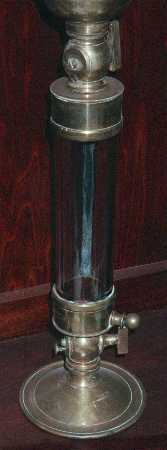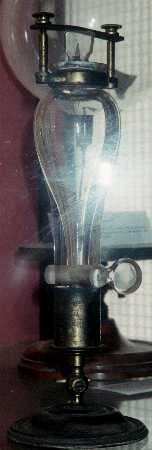| In letters written in 1776-77 the Italian physicist Alessandro
Volta (1745-1827) described a new form of Eudiometer, which is a device
for testing the "goodness" of air. In its most useful scientific form,
this was a stout glass tube of constant inner diameter closed at the top,
where two electrodes passed through the glass and formed a spark gap. The
lower end of the tube was placed in a dish of water, and the air to be
tested was introduced into the tube and its volume noted. A known volume
of hydrogen was then let into the tube, and the mixture ignited by static
electricity. The experiment could then determine the goodness of the air
(the oxygen content) from measurements of the volume of the remaining gas.
The instrument at the near right is in the collection of
historical instruments at Transylvania University, and is the form invented
by Volta. The mid-to-late 19th century instrument at the far right is at
St. Patrick's College in Maynooth, County Kildare, Ireland, and is the
form devised by Henry Cavendish (1731-1810). |
 |
 |